The most complete analysis of Google Glass
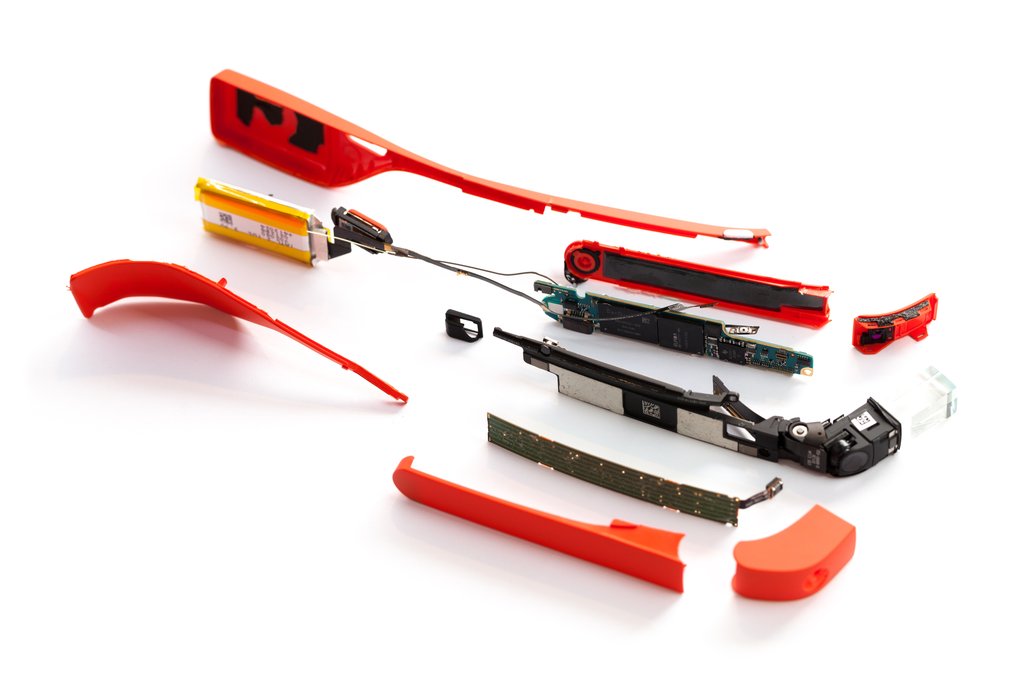
For the first time since the device began testing (April 2012), Google-glasses were completely disassembled . Hackers, most likely, stopped the threat to turn off glasses when the conditions of use were violated and the device’s high price was $ 1,500, but in this case Nathan Seidl, head of Sparkfun Electronics , helped buy and disassemble Star Simpson and Scott Torborg.
Obtaining points is not an easy task, because at the moment they are not available to everyone, but only to application developers for a new platform. Extradition is done at just three points throughout the United States: in Mountain View (California), Los Angeles and New York; Near Google Glass Studios in these cities, you can constantly see people wandering aimlessly accustomed to "Glass . "
')
Lucky time is assigned, and upon arrival, he is met by an employee of “Google” with a bouquet of mimosa. Guglovets helps to choose the desired color of the device (coal-dark, tangerine, slate, white or sky blue) and within 45 minutes explains how to use glasses, including shows how to connect another phone and link Google account.
Points are issued in a beautiful and convenient box of fully recyclable paper. The kit includes a USB cable and a charger , a small cloth case on a string , and a dark and transparent protective screen.
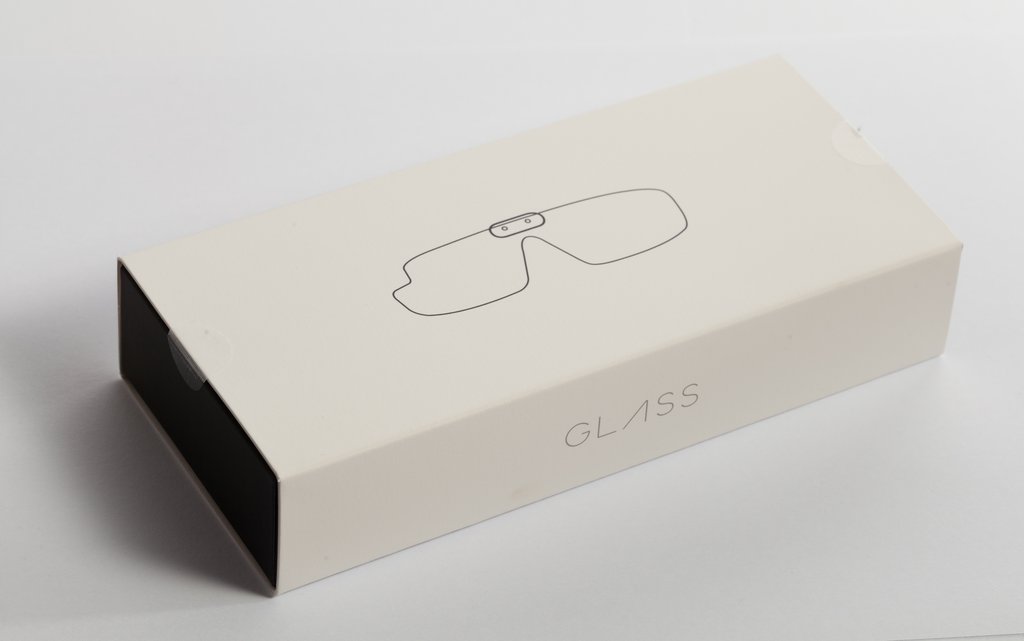
Like Dustin Curtis , Star and Scott paid attention to the high build quality. By the way, along with the glasses, they got access to the Mirror API , the platform on the basis of which applications are created for Glass.
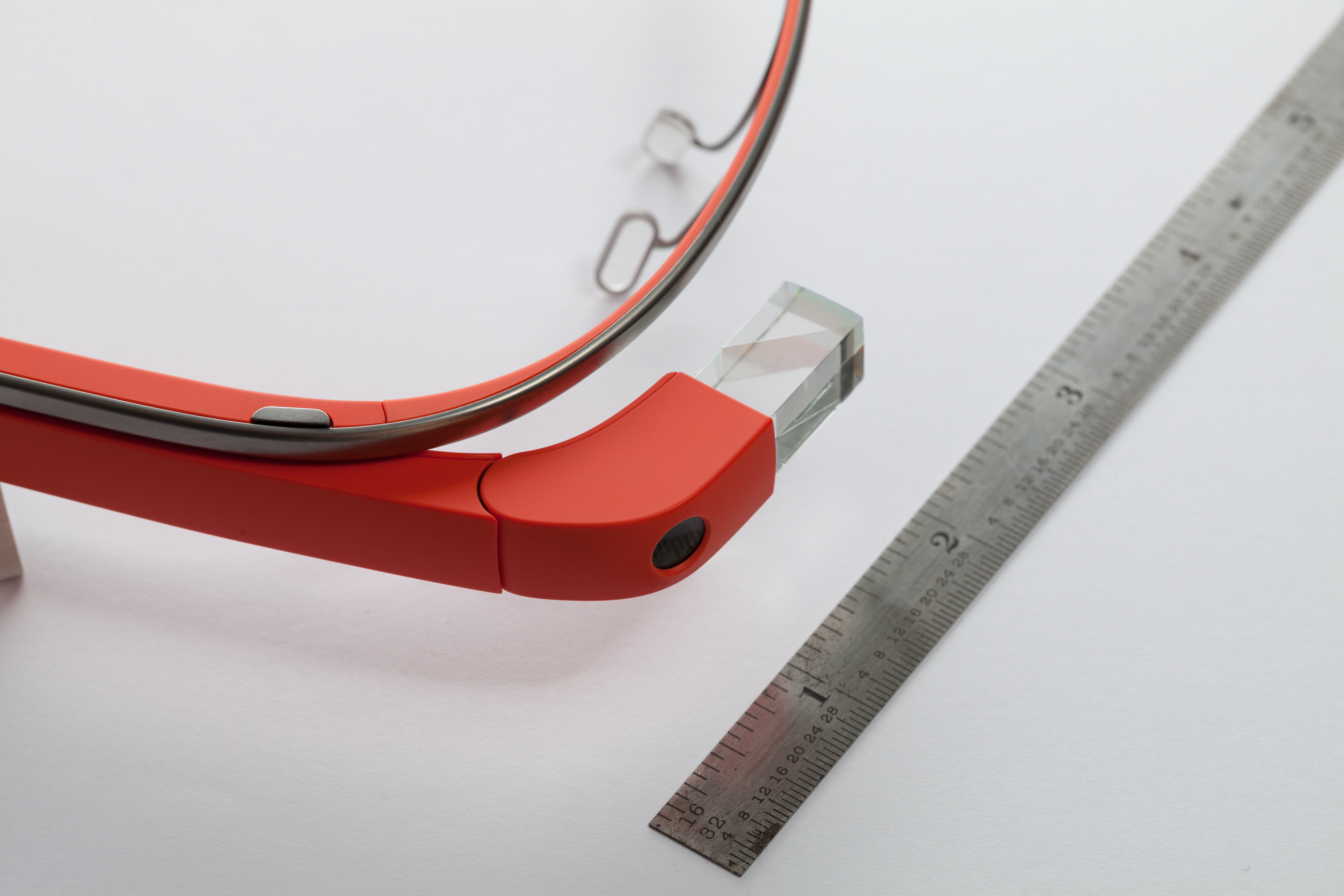
The researchers immediately went to the laboratory and began to disassemble. They noted that with some skill and experience, glasses can be disassembled and reassembled, causing them minimal, cosmetic damage. Hackers successfully collected their device copy back.
It has been suggested that the glasses can be evenly filled with epoxy or some kind of lacquer, which does not allow to study their internal structure without a strong solvent. This, of course, turned out to be wrong.
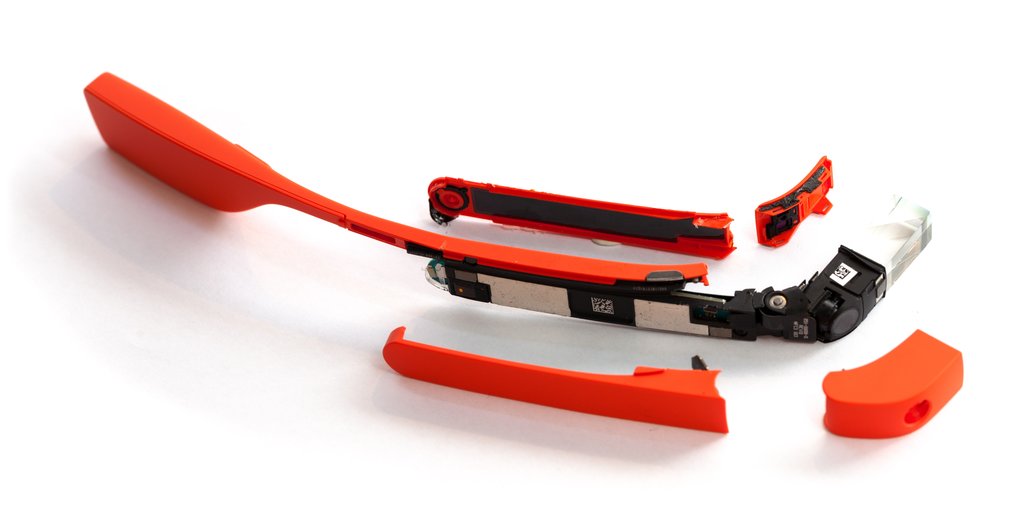
Not knowing where to start, the hackers removed the mount to the titanium handle by unscrewing the Torx-type star-head screw.

They immediately became visible is usually hidden serial number of the device.

As planned, "Glass" is easy to fix on ordinary glasses, although there is no official support for this yet. In this case, it will be inconvenient to use the device, since the proximity sensor of the head behaves incorrectly, focusing on the glasses lens.

Then a part of the body near the screen was revealed.

The photo shows the head position sensor and, presumably, the light sensor.
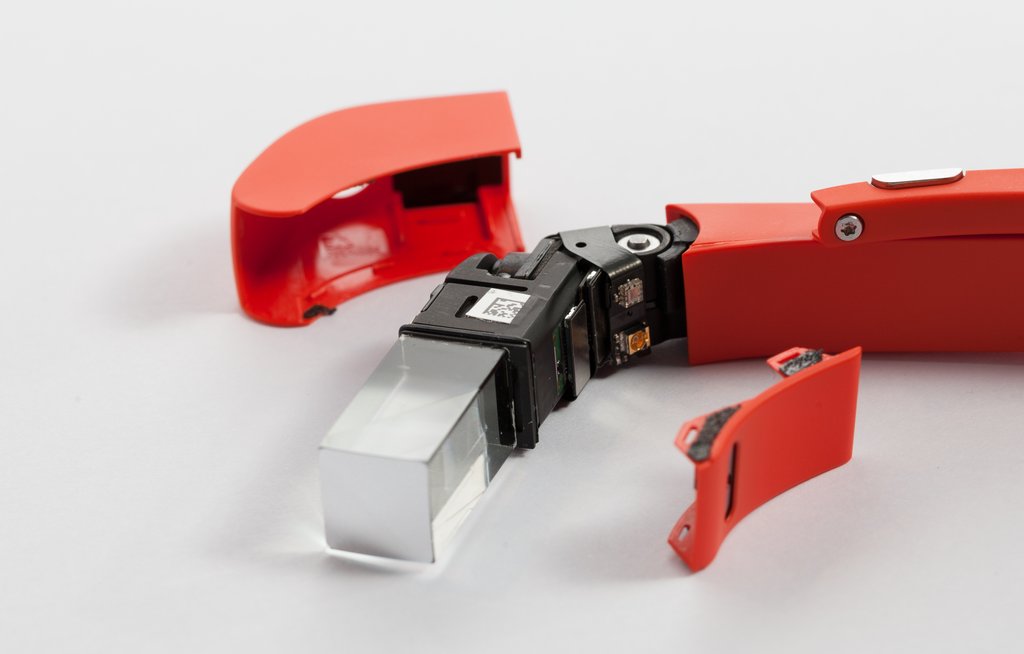
The touchpad is located on the side of the glasses. As it turned out, this model by Synaptics is running Synaptics T1320A controller.
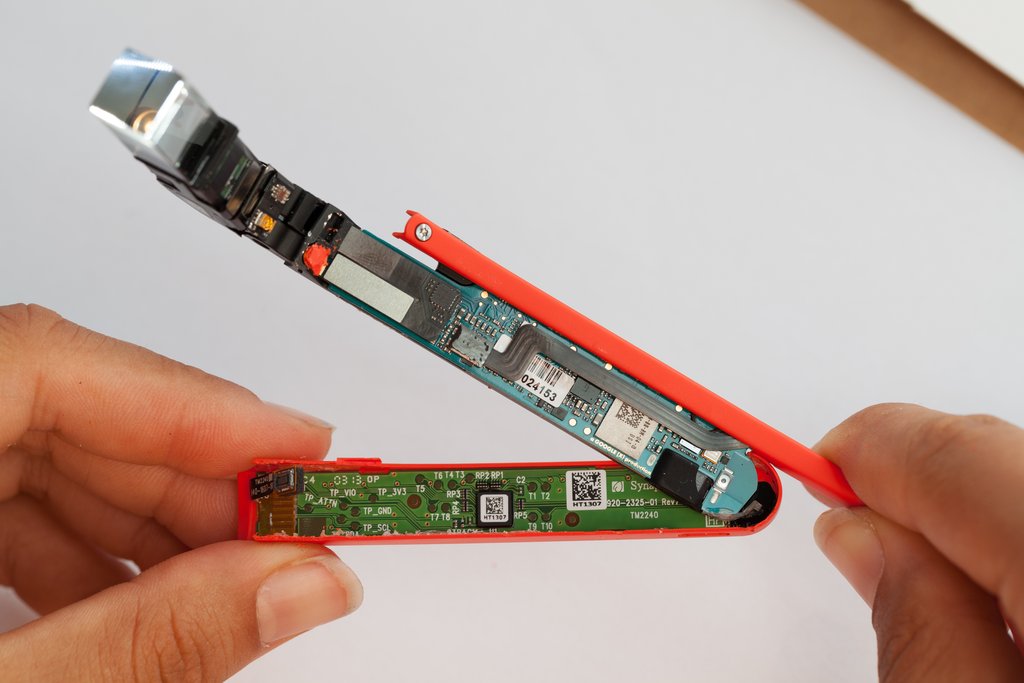
The photograph shows the motherboard of the device, already cleared of a large amount of thermal paste. The system kernel has long been known: this is the TI OMAP4430 (Cortex-A9), gigabytes of Elpida RAM and 16 GB of flash memory.

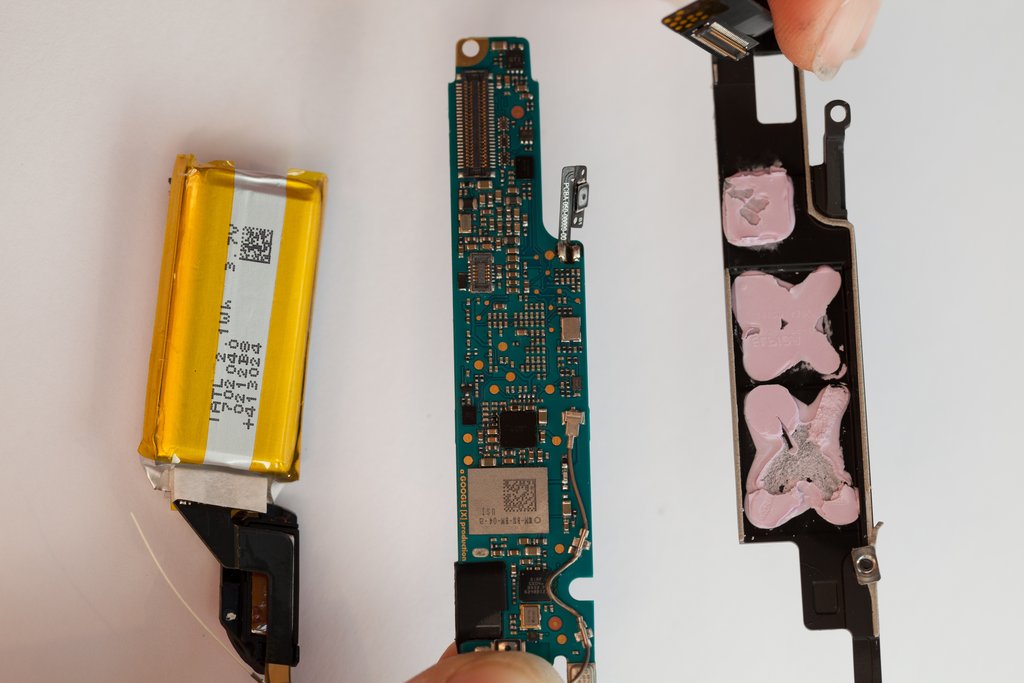
On the board there is an unfamiliar marking of Google [X] production.
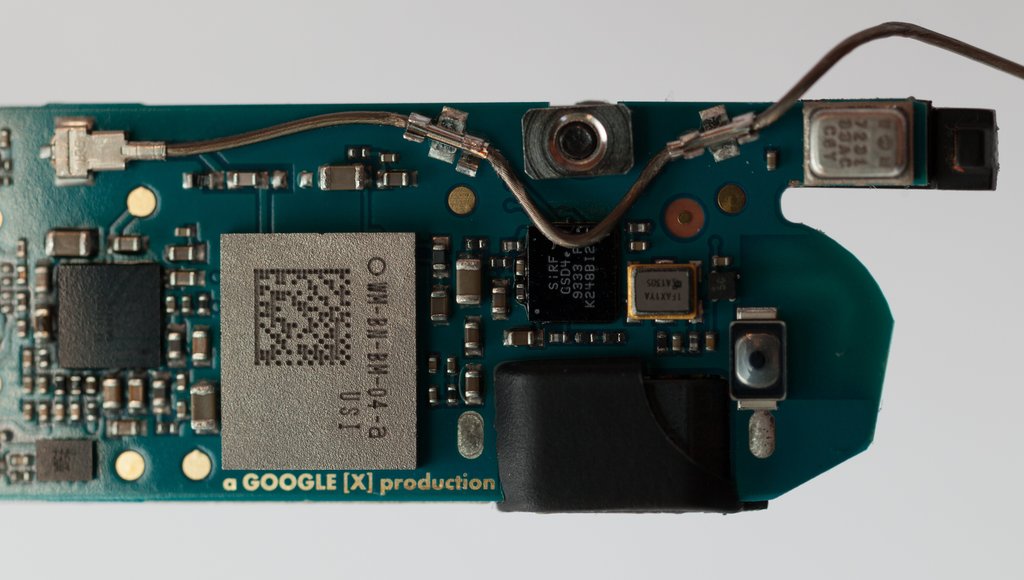

Tearing off the plastic, the hackers discovered that the device’s battery is located behind the ear to maintain balance. Its case indicates that it has a capacity of 2.1 W · h (about 570 mA · h). The battery can not be changed because it is soldered to a flexible printed circuit board.
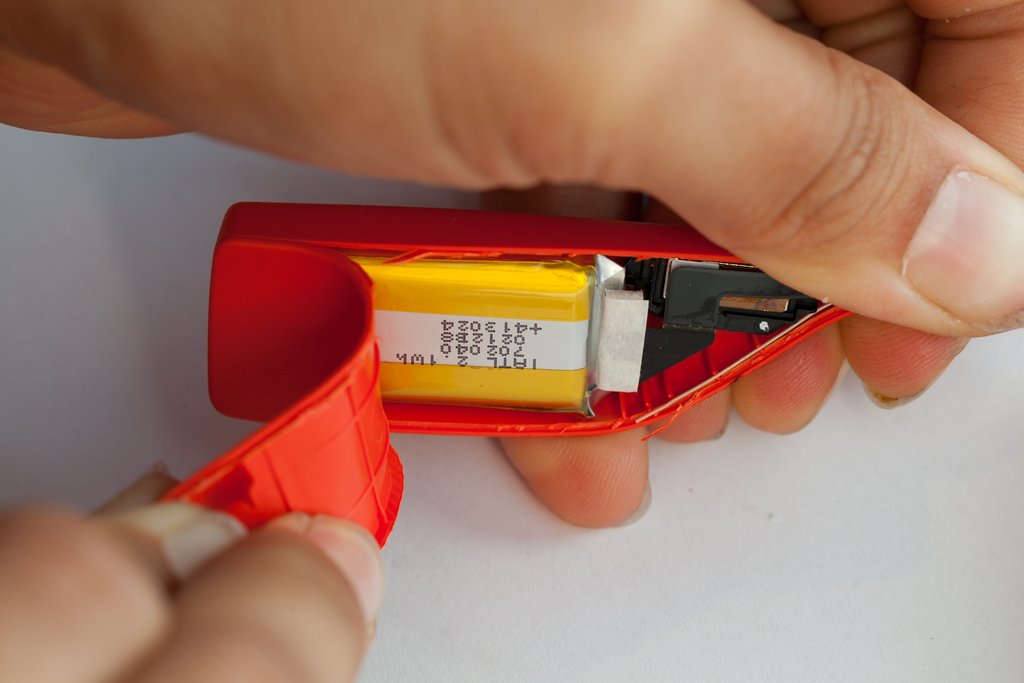
Behind the ear, in front of the battery is a speaker that transmits sound directly into the bone, combined with a tactile button.

The motherboard, display, camera, and sensors connect another flexible printed circuit board that wraps these components.

It also contains the inertial sensor InvenSense MPU-9150.

The greatest interest in glasses is of course the screen.

From this miniature monitor with a resolution of 640 × 480 pixels, the image is projected onto the screen through a small number of optical elements. As a result, in the upper right corner, a feeling of a small floating picture is created a few meters from the face. In the first photo, the monitor lies on a ten cent coin, its diameter is 17.91 mm (slightly less than 1 ruble coin).
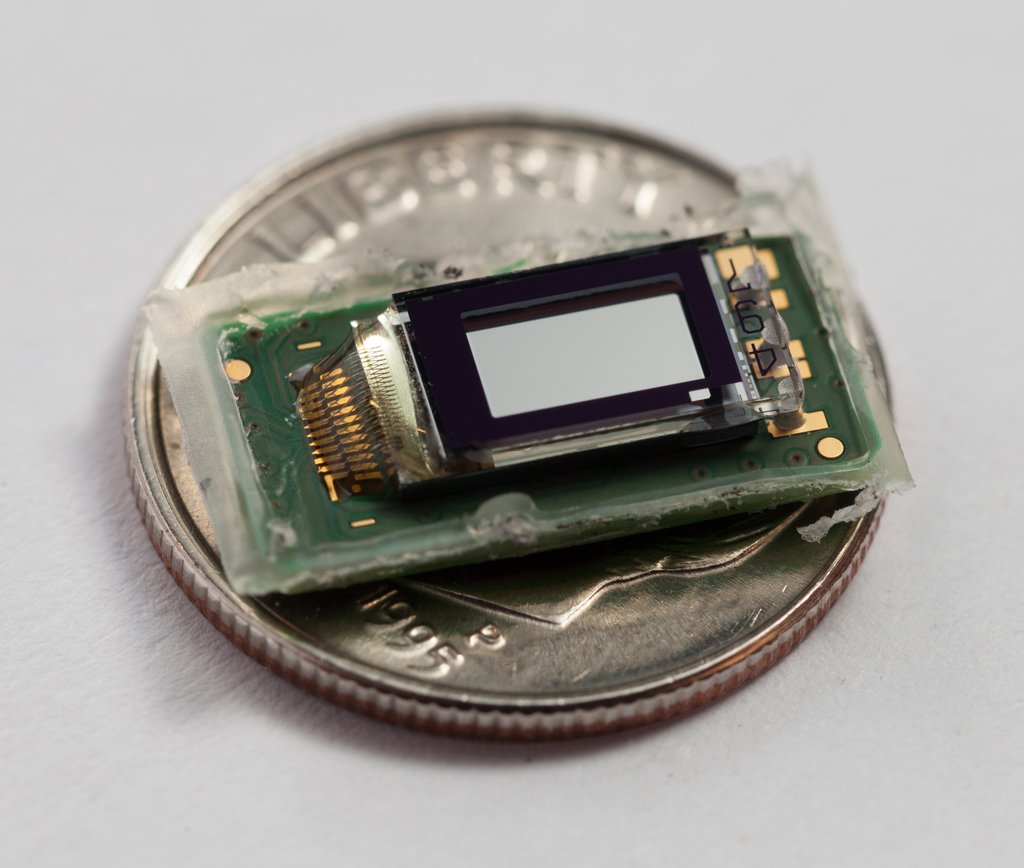


Glass has a typical smartphone camera. The signal from it goes to the central processor, it has no direct output to the screen.
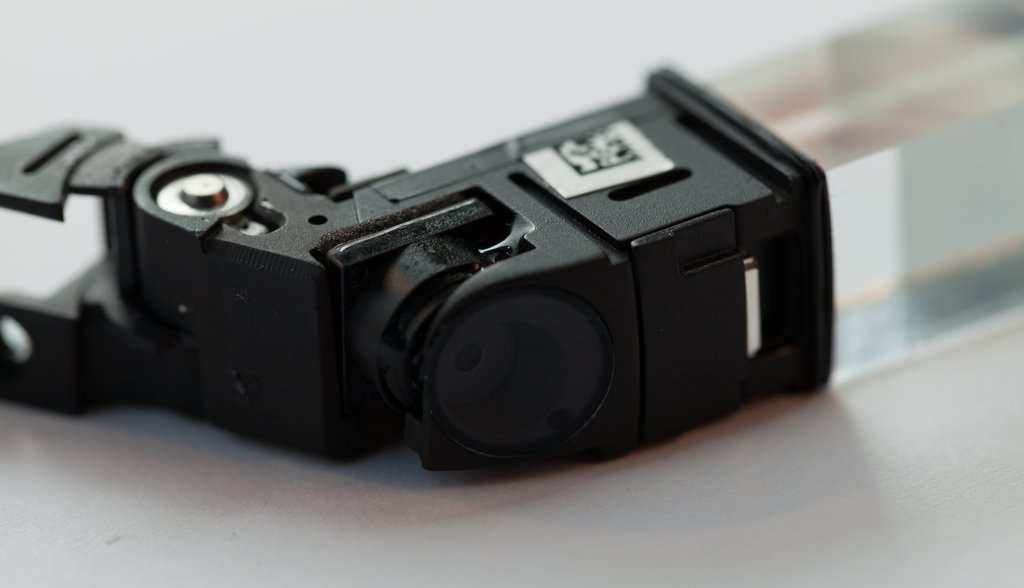
In general, hackers described the device as "surprisingly simple." This allows us to hope that the recommended price of the headset will be significantly lower than the price of the prototype.
Source: https://habr.com/ru/post/183054/
All Articles